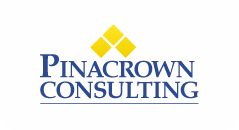The UK officially left the EU on 1 January 2021, plunging UK exporters into a mire of post-Brexit customs and trade procedures.
It has been a challenge for many traders to adapt to the new rules which can be complex and require a lot of additional preparation and paperwork.
Here, in plain English, is the essential information you need to know.
Procedures for exporters
To export any goods to the EU, you will have to digitally process an export declaration using the national export system (NES).
To sign up and make your declaration, there is a fair amount of things you will need to have on hand. They include:
- A GB economic operator’s registration and identification (EORI) attained from HMRC. Getting the right one will ensure you avoid delays and costs.
- An intermediary with access to the customs handling of import and export freight (CHIEF) system or a CHIEF badge to do it yourself.
- Access to the safety and security system
- Calculations of the value of your goods.
- The commodity code of your goods, which you find using HMRC’s trade tariff look up.
- Licenses and certificates for certain goods, including livestock and food.
You can see from even that selective list that the declaration process is complex, so you should be honest with yourself about whether you can do it single handedly or if you need to hire someone to help.
Alternatively, intermediaries are available to handle the process; contact our team of flexible accountants for further details of what we can do for you.
Procedures for importers
The import procedure is similar, so get ready by acquiring an EORI number and checking whether you need a certificate or license for the goods you want to bring into the country.
A standard import declaration form is similar to export declarations, for which you’ll need access to CHIEF through an intermediary or a CHIEF badge, as well as your commodity code.
For most controlled goods, including food and chemicals, however, you’ll need to make a simplified declaration.
You can also make a delayed declaration, for which you will have six months after the import to submit your supplementary declaration.
Full border controls are also being phased in for imports, so there are some dates to watch out for:
- October 2021: all products of animal origin (POAO), certain animal-by-products (ABP) and high-risk food and feed not of animal origin (HRFNAO) require prenotification and presentation of health certificates.
- January 2022: Delayed declarations no longer be available, safety and security declarations required. Sanitary and phytosanitary (SPS) checks will also be required on POAO, ABP and HRFNAO imports from this time along with relevant documentation.
- March 2022: checks at border control points take place on live animals and low risk plants and plant products.
VAT accounting
This is another part of the import declaration process, regardless of whether you’re going down the standard or simplified route.
How you pay VAT depends on the consignment value, or the value of the goods you are receiving.
If the consignment value is £135 or below, you will no longer have to pay import VAT at the border, but must report it to HMRC under the reverse charge mechanism.
If the value is more than £135, then you will have to pay import VAT, for which you have two options: you can pay at customs (if you use a courier, they will pay and recharge you), or you can use postponed VAT accounting.
Traders who make delayed declarations must use postponed VAT accounting, which means they will have to account for import VAT on their periodic VAT return, including the date they imported the goods.
Talk to us for advice on filling out your customs declarations.
